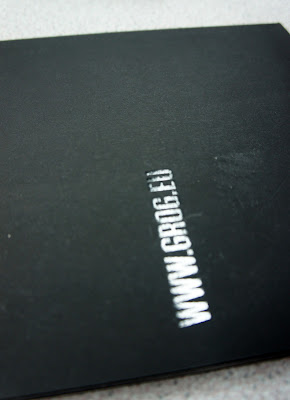During this session we examined different examples of print, investigating how they were produced on a commercial scale...
This is an example of a Copper Plate which will be used for high volumes of prints because its more durable. Everything to be printed is engraved into the plate, including half-tones, line work and type. *Most likely produced through Embossing/ De-bossing or using a Foil tool. Rotogravure (Gravure)
Embossing...In my opinion this looks as if it would of been a high-cost project. Despite there probably being no printing plates introduced. The stock looks quite expensive due to its thickness and soft-coated finish, and when you think about it on a commercial scale it would've cost significantly as oppose to the embossing plate.
This is an example of an aluminium plate, often used for one-off projects because once its been ran through the printers, there will be blemishes in the sheet, meaning its unlikely that you'll be able to get a sharp and clean image again. I was quite shocked at how thin the plates were, but obviously this reflects the fact that it's one of the cheapest methods for producing commercial print. Offset Lithography (Litho)
Starbucks - Most likely produced through 'Litho' simply because of its high production, I've took into account that the product is very disposable, it's only purpose is to keep your drink warm, and once you've finished your drink...its served its purpose and will be binned. Therefore 'Starbucks' have probably used a 'Litho' approach because of its low cost.
CD artwork - Most likely a Digital print with spot colour foiling.
As you can see from the following photographs they've been produced commercially using a digital 4 colour process (CMYK) If you look closely allowing your eyes to focus, you'll notice how the colours have been overlaid to produce the photographic outcome.
Finishes
Produced using a 'Spot UV Varnish', a process that applies a clear gloss of matte or satin onto specified areas. (Alternatively this can be applied onto most uncoated stocks too by firstly applying a Matte UV and then a Gloss UV, highlighting certain areas of any printed matter.)
Gold Foiling -
Adding a distinct element of quality, developed through a printing process whereby a thin metallic foil is added to a specific area of your design.
....
Handout
























No comments:
Post a Comment